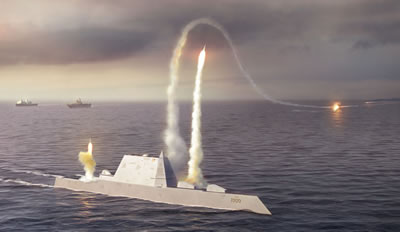
The U.S. Defense Department, the Navy and shipbuilders Bath Iron Works in Maine and Ingalls Shipyards have concluded an agreement to swap the construction of DDG-1000 and DDG-51 class ships, to establish more efficient construction of the next-generation destroyer at one shipyard instead of two. According to John J. Young Jr., undersecretary of defense for acquisition, technology and logistics, Bath Iron Works in Maine will build all three DDG-1000 destroyers. According to earlier plans, work on the DDG-1000 destroyers previously was to be split between General Dynamics’ Bath Works and Northrop Grumman’s Ingalls Shipyard in Mississippi. As part of the new agreement compromised between all sides, Ingalls shipyard received additional Navy vessels, gaining a contract to build two more DDG-51 guided-missile destroyers. Sixty-four Arleigh Burkes have been built to date, not counting the two new ones slated for construction at the Ingalls shipyard.

The DDG-1000 Zumwalt-class vessel was originally designed to replace the DDG-51 Arleigh Burke class of AEGIS destroyers developed 30 years ago. The DDG-1000 design utilizes a distinctive streamlined ‘low profile’ hull, electrical propulsion and directed energy weapons to name only a few of unique features to be introduced with the new, modular design. However, DDG-1000 is admittedly an extremely complicated and expensive development, Young said. Cost of a first prototype, or lead, DDG-1000 ship is estimated to be around $3.2 billion, he said, with prices of follow-on vessels likely to decrease due to industrial economies of scale. The design and development of the DDG-1000 “has gone well,” Young said, noting that the program has “gone to budget gone on schedule.”
Initial plans were to build 32 of the DDG-1000-series vessels at the Bath and Ingalls shipyards. As part of the Defense Department’s proposed fiscal 2010 budget recommendations only three vessels will be built. “We cannot allow more ships to go the way of the DDG-1000,” Gates told the Naval War College audience. The DDG-1000’s rising cost per ship, he noted, was among the reasons for buying reduced numbers. If the DDG-1000s couldn’t be efficiently produced, Gates “was potentially prepared, even in the face of clear political danger, to go back and possibly cancel two ships, and that would have cut jobs in both shipyards,” Young said.
















